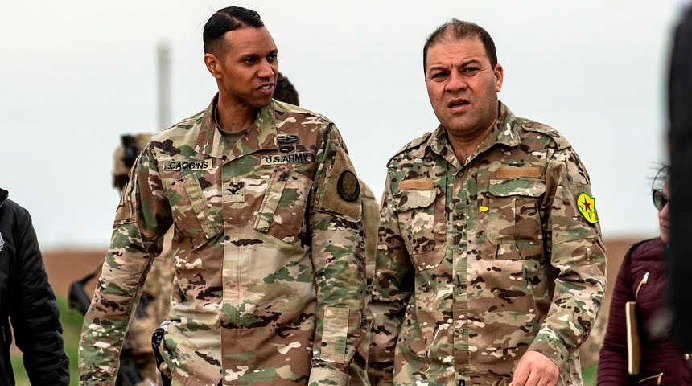
The Islamic State is continuing to carry out guerrilla attacks; developing and maintaining a comprehensive intelligence picture of the group is seen as an important weapon to keep its militants at bay.
In late March, the Telegraph reported that four Islamic State (IS) militants escaped from the Ghweran prison in the northeastern Syrian city of Hasakah but were quickly recaptured. The Kurdish Syrian Democratic Forces (SDF), which played such a critical role in destroying IS’ so-called caliphate, are in charge of the prison. The US military was reported to have provided aerial reconnaissance assistance to support the SDF’s recapture of the IS prisoners. Other news stories said up to 12 prisoners escaped.
The SDF continues to be responsible for the security of the prisons in northern Syria, where roughly 11,000-12,000 captured IS fighters are held.
The March 30 prison incident highlights the conundrum surrounding the IS detainees. Western governments refuse to accept their repatriation, while the SDF believes they should face prosecution inside Syria, if necessary with an international tribunal.
Although IS no longer controls large swaths of territory in Iraq and Syria, roughly 15,000-20,000 of the terror group’s fighters have morphed into an insurgency. IS continues to mount guerilla attacks on Iraqi and Syrian security forces. IS sleeper cells are reportedly planning bombings and assassinations.
In October 2019, US operatives relying on sensitive intelligence killed IS leader Abu Bakr al-Baghdadi in a raid in rebel-controlled Idlib province that involved the use of Syrian airspace overseen by Russia and Turkey.
But the IS insurgency and IS detainees present an ongoing real and present danger to the region and beyond.
We should expect IS to exploit the following:
Acrimonious relationships among state and non-state enemies of IS, including the United States, Syria, Iran, Iraq, Russia, Turkey and the SDF.
Iraq’s failure to form a government, which impedes a cohesive national security strategy.
Ongoing regional ethnic and sectarian conflict as well as a humanitarian crisis exacerbated by the coronavirus.Iraq’s political turmoil and the ongoing Syrian civil war have severely complicated the challenge of building a post-conflict reconstruction and reconciliation plan, particularly in Sunni-dominated geographic space from which IS seeks to draw support.
Key to winning the fight against IS is building and maintaining an accurate intelligence picture of the group, including where the terrorists are located as well as their plans and intentions to conduct attacks.
The process is highly dynamic. Information collected on a terrorist’s location or attack plans that might have been accurate yesterday may no longer be so today.
Effective counterterrorism operations rely first and foremost on collecting information from people. This is called human intelligence, commonly referred to as HUMINT. Collecting intelligence on terrorists is highly challenging and the information is sometimes unverified or incorrect. Those who use the intelligence, especially military units that conduct raids or government leaders seeking to shore up their country’s defenses, must rely on expert analysts to evaluate the raw intelligence.
Intelligence analysis can be like assembling a jigsaw puzzle, only some of the pieces are part of a different puzzle, and others are missing altogether. There is always great value in sharing intelligence on counterterrorism, not only with a nation’s traditional allies but sometimes with enemies as well.
Everyone with a stake in the fight against IS should therefore consider the value of increasing the scope and frequency of intelligence sharing with an eye toward detecting and preempting looming IS threats before they are visited on our respective shores.
In September 2015, Iraq began sharing intelligence with Russia, Iran and Syria to improve their collective effectiveness in the fight against IS. The United States has also had a long-standing partnership with Iraqi security forces, which involved sharing counterterrorism intelligence.
When I served in the CIA, I learned firsthand the value of sharing intelligence with intelligence services of nations whom the United States would not regard as traditional allies. But we understood that even though some of our nation’s interests were antithetical to one another’s, there were other high priorities such as counterterrorism where we could find some common ground even with our enemies.
Of course we can expect some wrangling over who exactly are characterized as “terrorists.” For example, since becoming militarily involved in Syria in 2015, Russia has targeted a significant number of its strikes against President Bashar al-Assad’s opposition, whom the international community would not classify as terrorists.
Dialogue and debate about classifying terrorist targets, valuable in its own right, could potentially be a precursor to more expansive negotiation about the future of Syria.
Now it’s up to the diplomats, war fighters and intelligence professionals to make it happen.
 Eurasia Press & News
Eurasia Press & News

